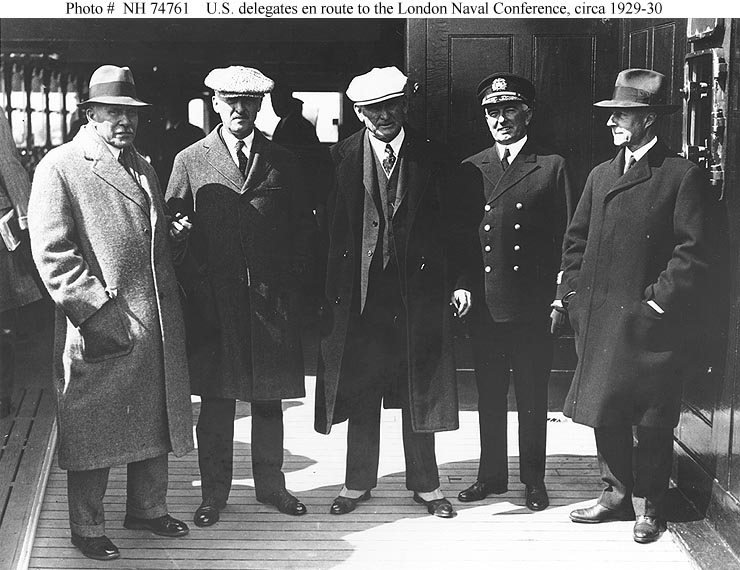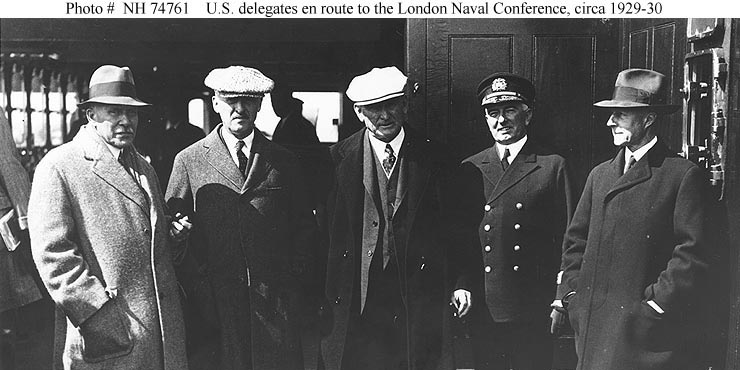I’m baaaaaaack! Did anyone miss me? I bet you did! <3
Actually I haven’t been gone. It’s just now we have uh, team policy. No type of shipgirl’ll monopolize site content.
(Ethan & the other Chinese translator guy: when you translate for the book, start below. Sorry! I’ll make it clearer next time.)
So it’s time for more history!
W-what’s that? You’d rather see half-naked shipgirls? Hmph! Well. Listen. History is kind of like eating vegetables. You know how if vegetables are cooked badly then they taste really bad, right? Well, history is kind of the same way. Most people think of it as being dry or being boring. Morgane’s post earlier about Morison is an important example of someone who could make history interesting for the vast majority of us normal readers. In this case, he’s a very good cook.
However! Just like vegetables, sometimes people overdo it. You’ve seen plenty of people who complain that they’re eating salads and still can’t lose weight. Well! You ever see what’s on those salads? Tons of dressing and meat and other things that aren’t vegetables.
History, again, can run into the same problem. Nowadays, it’s incredibly easy for us to simplify things and reduce things down to very basic components in order to entertain. You see this a lot in recent war movies, fiction, video games and so on. “Americans won the war because they outproduced Japan.” “Midway was lost because Nagumo was an idiot.” “Yamamoto was brilliant; if only Americans haven’t assassinated him. Surely he could have turned the war around.”
So on, and so forth. This, by the way, is also bad. I think oversimplifying history is worse than not learning history at all. Much like empty calories that pile up quickly, you create a lot of under-informed people. I won’t get into too much detail here. But, I think…
I think you should learn about history because you can then formulate your own opinions about past events. You simply can’t do that if you get the “tl;dr” or the “boom boom flash bright boom THE HISTORY CHANNEL” version.
I’m not saying it’s easy. Cooking isn’t easy. Writing about history isn’t easy either. But, you know, if you’ve had good food, you really don’t want to be always eating the junk. History is the same way. I enjoy movies and “documentaries” with large explosions on occasions, but I do love a good book much more.
Mind you, I’m not a great cook yet! But, I do my best to try not to just feed you the “junk food” versions of the things we talk about. Where applicable you’ll see me talk about the sources we use. Not to mention, at the end of the day I do expect you to go and read up on the things we talk about here!
Okay, now, onto the actual content.
Can we talk yet?
Shhh!!
Don’t you shh her, Surcouf! You got to talk last time! Germany didn’t even get a say in the matter!
Espèce d’idiot! Germany wasn’t even allowed to have army. Where get navy??

… Oookay. Yeah. Definitely back to normal.
Anyways. Last time I mentioned that there were some troubles with definitions of ship classes. I won’t get into too much detail because it’s slightly less important in the grand scheme of what was accomplished. However, I will point out that France has the biggest stake in London. In other words, the French needed the best deal for the following reasons.
Let’s recap.
- Security. France is basically surrounded by unfriendly or hostile forces. The threat of Soviet Union (and communism) aside, Germany, Italy, and Spain are all potential opponents.
- Submarines. France built massive submarines that Britain saw with some alarm. France is obviously not willing to scrap any of these thousand-plus ton submarines unless massive concessions can be made.
- Contre-torpilleurs, which are a sort of powerful small vessel. I generally think of them as similar to Japan’s “super” destroyers or destroyer leaders. Alternatively, you can think of them as cruiser hybrids – they’ve got some pretty big guns. Again, these are of concern because it is tremendously difficult to categorize them properly.
- French capital ships. There is significant outcry within France that France should get a bigger quota than last time. At the very least, France should have a bigger allotment than Italy. This runs contrary to the purpose of the London conference, which is to limit shipbuilding of all types. Needless to say only the US is tentatively in support of this particular viewpoint.
So, as you can see, the French do have a lot of demands. They also have a pretty simple idea. Global limitation.
Global limitation is the idea that the five countries would get a total number of tons that they’re allowed to do whatever they want with. France was willing to accept the prospect that a certain tonnage limitation be established – say, to make up numbers, 1,000,000 tons for submarines. However, these limitations would be added to a country’s naval tonnage as a whole. That way, if France wants to keep on building its giant submarines, it can do so without any further interference.
This idea was … well, Japan and Italy were tentatively in for it, and the US decided to watch and see. Seeing the potential for conflict (France had a very hard-line WE WILL HAVE MORE TONNAGE THAN ITALY) the British decide to open the discussion up and put topics where they think everyone would agree on at the early parts of the conference.
Given that it’s pretty easy to find the full text online, I thought I’d just point out bits that I find to be super interesting. As it turns out, the capital ships were easy to reach consensus on. The others, well, less so.
So. First things first. Big ships. Right off the bat, we decided to complain. The British first proposed that we limit capital ships to 25,000 tons and 12′ guns. Our naval intelligence already knew that the Japanese were building things that are bigger – rumors of 16” and even bigger guns were already circulating even in 1930. This won’t do.
France and Italy jumped in, too. They were interested in upgrading their old battleships. Therefore, it would be good if no strict limitations were established.
So, what ended up happening was that everyone agreed to temporarily halt the building of new battleships for another five years, until 1936. Most countries would take the time to modernize their old battleships. The full text you can see below.
PART I Article 1 The High Contracting Parties agree not to exercise their rights to lay down the keels of capital ship replacement tonnage during the years 1931-1936 inclusive as provided in Chapter II, Part 3, of the Treaty for the Limitation of Naval Armament signed between them at Washington on 6 February 1922 and referred to in the present Treaty as the Washington Treaty.This provision is without prejudice to the disposition relating to the replacement of ships accidentally lost or destroyed contained in Chapter II, Part 3, Section I, paragraph (c) of the said Treaty.
France and Italy may, however, build the replacement tonnage which they were entitled to lay down in 1927 and 1929 in accordance with the provisions of the said Treaty.
Article 2 is a list of all the ships the countries were allowed to be kept. Instead of posting the full text, I’ll just summarize it for you.
| Britain | ||||||
| Keeping 15 BBs | ||||||
| Gun info is number of turrets x number of guns per turret | ||||||
| Class | Number | Built | Displacement | Guns | Total Gun | Speed |
| Queen Elizabeth | 5 | 1912 | 27500 | 4×2 15” | 8 | 24 |
| Revenge | 5 | 1913 | 25750 | 4×2 15” | 8 | 22 |
| Renown | 2 | 1915 | 26500 | 3×2 15” | 6 | 30 |
| Hood | 1 | 1916 | 41000 | 4×2 15” | 8 | 31 |
| Nelson | 2 | 1922 | 33500 | 3×3 16” | 9 | 23 |
Britain scraps 3 Iron Dukes and the aging Tiger.
| USA | ||||||
| Keeping 15 BBs | ||||||
| Class | Number | Built | Displacement | Guns | Total Gun | Speed |
| Arkansas | 1 | 1910 | 26000 | 6×2 12” | 12 | 21 |
| New York | 2 | 1911 | 27000 | 5×2 14” | 10 | 21 |
| Nevada | 2 | 1912 | 27500 | 2×3, 2×2 14” | 10 | 21 |
| Pennsylvania | 2 | 1913 | 31400 | 4×3 14” | 12 | 21 |
| New Mexico | 3 | 1915 | 32300 | 4×3 14” | 12 | 21 |
| Tennessee | 2 | 1916 | 32300 | 4×3 14” | 12 | 21 |
| Colorado | 3 | 1917 | 32600 | 4×2 16” | 8 | 21 |
The US scraps the two Florida classes, though Utah would eventually become a target ship. The rest are fairly in line with expectations.
| Japan | ||||||
| Keeping 9 BBs | ||||||
| Class | Number | Built | Displacement | Guns | Total Gun | Speed |
| Kongou | 3 | 1911 | 27500 | 4×2 14” | 8 | 26 |
| Fusou | 2 | 1912 | 30600 | 6×2 14” | 12 | 22 |
| Ise | 2 | 1915 | 31260 | 6×2 14” | 12 | 23 |
| Nagato | 2 | 1917 | 33800 | 4×2 16” | 8 | 26 |
Important note here. KanColle players will ask, wait, there are 4 Kongous. You’re right. Japan converted Hiei into a “gunnery training ship” so that she doesn’t get scrapped. 😉
Lastly, France and Italy. You can see that in contrast to the above, these ships really are showing their age. It’s now 1930, after all!
| France | ||||||
| Keeping 5 BBs | ||||||
| Class | Number | Built | Displacement | Guns | Total Gun | Speed |
| Courbet | 2 | 1910 | 23500 | 6×2 12” | 12 | 20 |
| Bretagne | 3 | 1912 | 23500 | 5×2 13.4” | 10 | 20 |
| Italy | ||||||
| Keeping 4 BBs | ||||||
| Class | Number | Built | Displacement | Guns | Total Gun | Speed |
| Conte di Cavour | 2 | 1910 | 22500 | 3×3, 2×2 12” | 13 | 22 |
| Andrea Doria | 2 | 1912 | 22700 | 3×3, 2×2 12” | 13 | 22 |
the Conte di Cavour did get rebuilt sometimes during the 1930s. Japan, too, upgraded all of her old battleships. But, since this is Tautog’s sub corner and this one doesn’t have any submarines in it just yet, I’m just going to go on to the other stuff.
Right. Aircraft carriers. The key bit to pay attention to is what I’ve highlighted below.
1. For the purposes of the Washington Treaty, the definition of an aircraft carrier given in Chapter II, Part 4, of the said Treaty is hereby replaced by the following definition:
The expression “aircraft carrier” includes any surface vessel of war, whatever its displacement, designed for the specific and exclusive purpose of carrying aircraft and so constructed that aircraft can be launched therefrom and landed thereon.
2. The fitting of a landing-on or flying-off platform or deck on a capital ship, cruiser or destroyer, provided such vessel was not designed or adapted exclusively as an aircraft carrier, shall not cause any vessel so fitted to be charged against or classified in the category of aircraft carriers.
3. No capital ship in existence on 1 April 1930 shall be fitted with a landing-on platform or deck.
This is because Japan laid down a carrier that was less than 10,000 tons. Surprise, surprise, they were trying to get around the treaty limitations. The loophole got patched up. Everything else self-explanatory. Article 4 and 5 is simply carriers can’t have big guns. Large carriers are limited to 8” guns and small carriers are below 6”.
Okay. We’re now getting into some nitpicky details. Let’s look at Article 6 and 7 and why this is important.
Article 6 1. The rules for determining standard displacement prescribed in Chapter II, Part 4 of the Washington Treaty shall apply to all surface vessels of war of each of the High Contracting Parties.2. The standard displacement of a submarine is the surface displacement of the vessel complete (exclusive of the water in non-watertight structure) fully manned, engined, and equipped ready for sea, including all armament and ammunition, equipment, outfit, provisions for crew, miscellaneous stores, and implements of every description that are intended to be carried in war, but without fuel, lubricating oil, fresh water or ballast water of any kind on board.
3. Each naval combatant vessel shall be rated at its displacement tonnage when in the standard condition. The word “ton” except in the expression “metric tons”, shall be understood to be the ton of 2,240 pounds (1,016 kg).
Take a look at this. Submarines were exempted from the definition of “standard displacement” in that their displacement do not count for fuel, oil, fresh water and ballast water. Now, why did they go out of their way to specifically mention submarines?
Well, let’s look at Article 7.
1. No submarine the standard displacement of which exceeds 2,000 tons (2,032 metric tons) or with a gun above 5.1 inch (130 mm) calibre shall be acquired by or constructed by or for any of the High Contracting Parties.
2. Each of the High Contracting Parties may, however, retain, build or acquire a maximum number of three submarines of a standard displacement not exceeding 2,800 tons (2,845 metric tons); these submarines may carry guns not above 6.1 inch (155 mm) calibre. Within this number, France may retain one unit, already launched, of 2,880 tons (2,926 metric tons), with guns the calibre of which is 8 inches (203 mm).
3. The High Contracting Parties may retain the submarines which they possessed on 1 April 1930 having a standard displacement not in excess of 2,000 tons (2,032 metric tons) and armed with guns above 5.1 inch (130 mm) calibre.
4. As from the coming into force of the present Treaty in respect of all the High Contracting Parties, no submarine the standard displacement of which exceeds 2,000 tons (2,032 metric tons) or with a gun above 5.1 inch (130 mm) calibre shall be constructed within the jurisdiction of any of the High Contracting Parties, except as provided in paragraph 2 of this Article.
Ah, so this is why. Exemptions made for countries that already built “oversized” submarines! Here’s what happened. Britain tried to get the submarine banned (again). When that didn’t work, they wanted to limit the submarine whenever possible. They thought that if they started small – putting strict definition or limitations on submarines, that the negotiations would get somewhere. However, the US and Japan both immediately objected. After all, the Pacific is huge, and bigger submarines were the only way to get the proper ranges that would allow a submarine to cruise the proper combat distances.
What happened was that Britain, initially suggesting a limit of around 1000 to 1500 tons, was made a counter-offer instead. Since many large (1500 to 2000 ton) submarines were already being built – including the British X1 which was at 2425 tons – we might as well allow those to be completed. Concessions were made in the form of limiting the caliber of future submarine guns (come on, it’s kind of silly to have huge guns on a submarine anyways).
The British delegation sorta saw the writing on the wall, and took the suggestion accordingly. That’s how Article 6 and 7 came about.
HEY! BIG GUNS ARE GREAT!
Well, look at the second bullet point and the third bullet point of Article 7. Those exceptions were made for the US and Japan respectively. We’ve got our Argonaut and Narwhals, remember? The Japanese, meanwhile, were building some big submarines too.
NOT AS BIG AS LE SURCOUF!
No. Not as big as the Surcouf. In fact, we even made an exception for the Surcouf to be kept –
VIVE LA FRANCE!
ON THE GROUNDS that the two other Surcoufs be cancelled.
…
Yeah. Come on. I’m surprised you didn’t know that.
I’m not.
Me neither.
Well, this wouldn’t be all that the folks at London discussed on submarines, but this is getting awfully long. The important takeaway message here was that the first part of the conference reached some conclusions that were generally agreeable to all. Loopholes (such as Japan trying to sneak in another CV) were closed up, and submarines weren’t nearly as harshly regulated as one might have.
Specifically, countries that have already built very large submarines such as France or the US or Japan were allowed to keep them.
However, as you’ll see in the next part, a lot of disagreements over the smaller ships arose. While well-intentioned, in the end only the US came away from the conference reasonably content.
Thanks for reading! I’ll see ya next time!
… What? Were you expecting cute shipgirls? TOO BAD! BEHOLD! A PHOTO OF FIVE DAPPER OLD MEN!
YAY ALL CAPS! NOW I TOTALLY GET WHY DOLPHIN DOES THIS!


